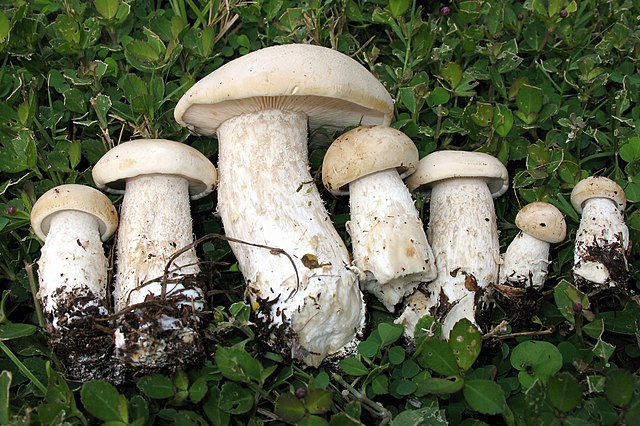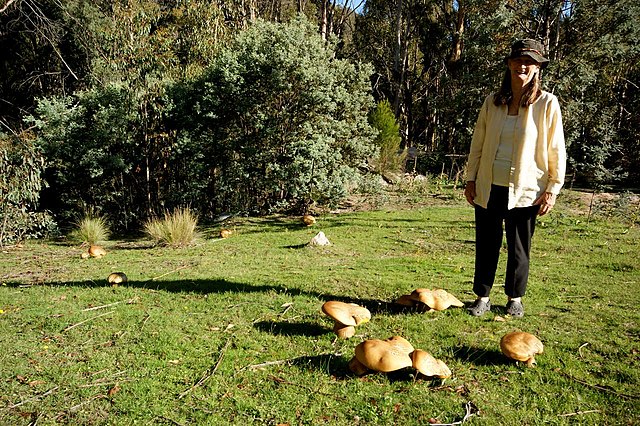Among the vast variety of fungi that populate our planet, a few stand out due to their sheer size. These colossal mushrooms not only capture our imagination but also play crucial roles in their ecosystems.
This article explores the world’s largest mushrooms, delving into their biology, significance, and the awe they inspire.
A Brief Overview of Mushrooms
Mushrooms, the fruiting bodies of fungi, come in an astonishing array of forms.
While many people are familiar with the small, edible varieties found in grocery stores, the fungal kingdom includes species that can grow to extraordinary dimensions. T
o understand the enormity of these giant mushrooms, it’s essential to first grasp the basics of fungal biology.
Fungi are distinct from plants and animals. They lack chlorophyll and therefore do not photosynthesize.
Instead, they decompose organic matter, playing an essential role in nutrient cycling. The main body of a fungus, called the mycelium, consists of a network of thread-like structures known as hyphae.
The visible mushroom is merely the reproductive part, designed to release spores and propagate the species.
Riesen-Schirmling: The Giant Umbrella
Another remarkable giant in the fungal world is the Macrocybe titans, also known as Riesen-Schirmling in German, meaning “giant umbrella.”
This mushroom can grow up to 3 feet in diameter and weigh over 30 pounds. Found in the tropical and subtropical regions of Central and South America, it thrives in grassy areas and fields.

The giant umbrella mushroom’s impressive size makes it a sight to behold. Its massive cap can provide shade, akin to a natural umbrella, while its thick stem supports this expansive structure.
Despite its size, the Macrocybe titans is edible and considered a delicacy in some cultures. However, its immense weight makes it challenging to harvest and transport.
The Armillaria Ostoyae: The True Giant
When discussing large mushrooms, the Armillaria ostoyae, also known as the honey fungus, deserves special mention.
Found in the Malheur National Forest in Oregon, this fungal network spans over 2,385 acres and is estimated to be over 2,400 years old. This single organism, often referred to as the “Humongous Fungus,” is considered the largest living organism on Earth by area.

This gigantic fungus exists mostly underground, with its mycelial network extending over a vast area.
Occasionally, it produces small, honey-colored mushrooms above ground, which are the visible part of this colossal organism.
The Armillaria ostoyae feeds on trees, often leading to significant forest damage. However, it also plays a vital role in breaking down dead wood and returning nutrients to the soil.
The Titan of the Tundra: Calvatia Gigantea
Calvatia gigantea, commonly known as the giant puffball, is another awe-inspiring fungal marvel. This mushroom can reach diameters of up to 5 feet and weigh as much as 50 pounds.
Unlike many mushrooms that produce a cap and stem, the giant puffball is a large, round, white ball that eventually splits open to release spores.

Giant puffballs typically grow in meadows, forests, and grasslands across North America and Europe. When young and firm, they are edible and often used in various culinary dishes.
As they mature, however, their interior turns into a mass of spores, making them inedible. Despite their somewhat mundane appearance, their sheer size makes them stand out in the fungal world.
The Largest Cap: Phlebopus Marginatus
Phlebopus marginatus, also known as the Salmon Gum mushroom, holds the record for the largest mushroom cap.
Found primarily in Australia, this giant can grow up to 3 feet across and weigh over 30 pounds. Its name comes from its association with the Salmon Gum tree, under which it often grows.

This mushroom’s immense cap sits atop a sturdy stem, giving it a majestic appearance.
The Phlebopus marginatus thrives in nutrient-rich soils, decomposing organic matter and contributing to soil health. Though not commonly eaten, it is considered edible and can be used in various culinary applications.
Ecological Importance of Giant Mushrooms
Beyond their impressive sizes, these giant mushrooms play significant roles in their ecosystems.
As decomposers, they break down dead organic matter, returning essential nutrients to the soil. This process supports plant growth and maintains the health of forests and grasslands.
Furthermore, these large fungi serve as food sources for various wildlife. Insects, small mammals, and even larger animals like deer often feed on mushrooms, integrating them into the food web.
In some cases, these giant fungi also form symbiotic relationships with plants, aiding in nutrient absorption and promoting healthy vegetation.
Conservation and Threats
Despite their ecological importance, giant mushrooms face several threats. Habitat destruction due to urbanization, agriculture, and deforestation significantly impacts their populations.
Climate change also poses risks, altering the conditions necessary for their growth and reproduction.
Conservation efforts for fungi lag behind those for plants and animals. However, recognizing the critical roles these organisms play in ecosystems highlights the need for their protection.
Preserving natural habitats, promoting sustainable land use practices, and raising awareness about the importance of fungi can contribute to their conservation.
Conclusion
The world of giant mushrooms is as fascinating as it is diverse. From the sprawling Armillaria ostoyae to the towering Macrocybe titans, these natural giants captivate our imaginations and underscore the incredible diversity of life on Earth.
Their roles in ecosystems as decomposers and food sources make them indispensable to environmental health.
As we continue to explore and understand these remarkable organisms, it becomes increasingly clear that mushrooms, regardless of their size, are vital components of our natural world.
Protecting them and their habitats ensures that these giants of nature can continue to thrive, supporting the intricate web of life that depends on them.


